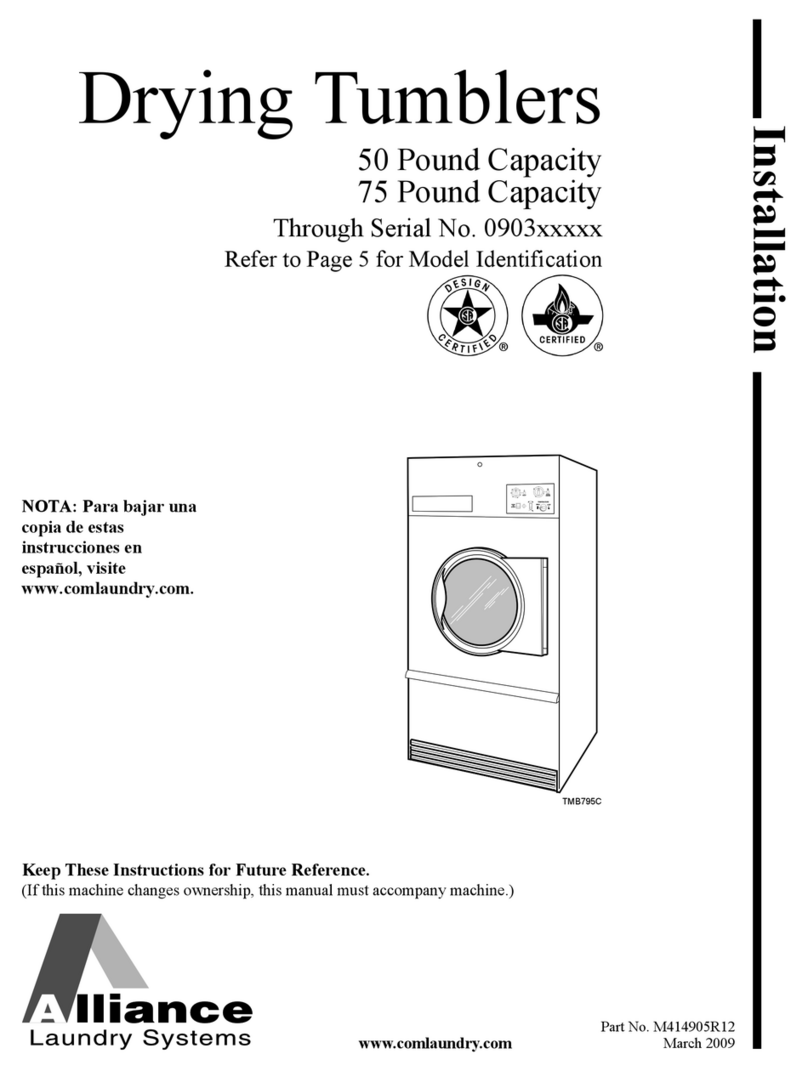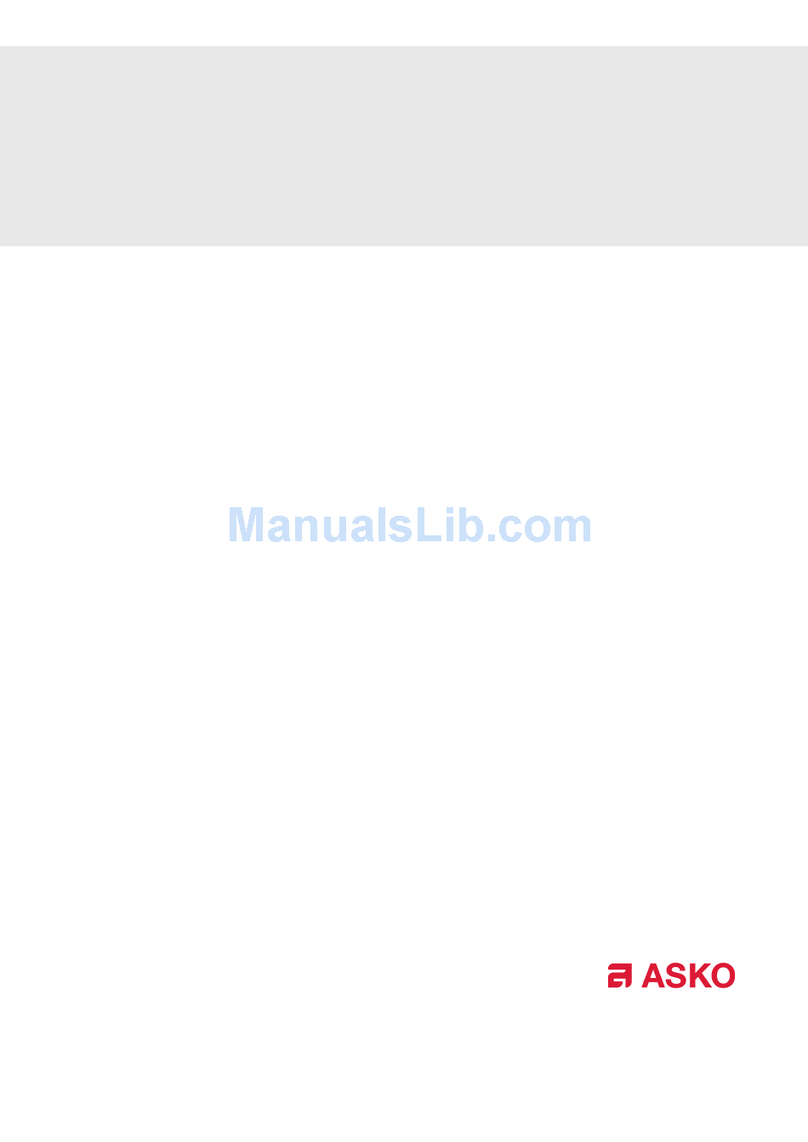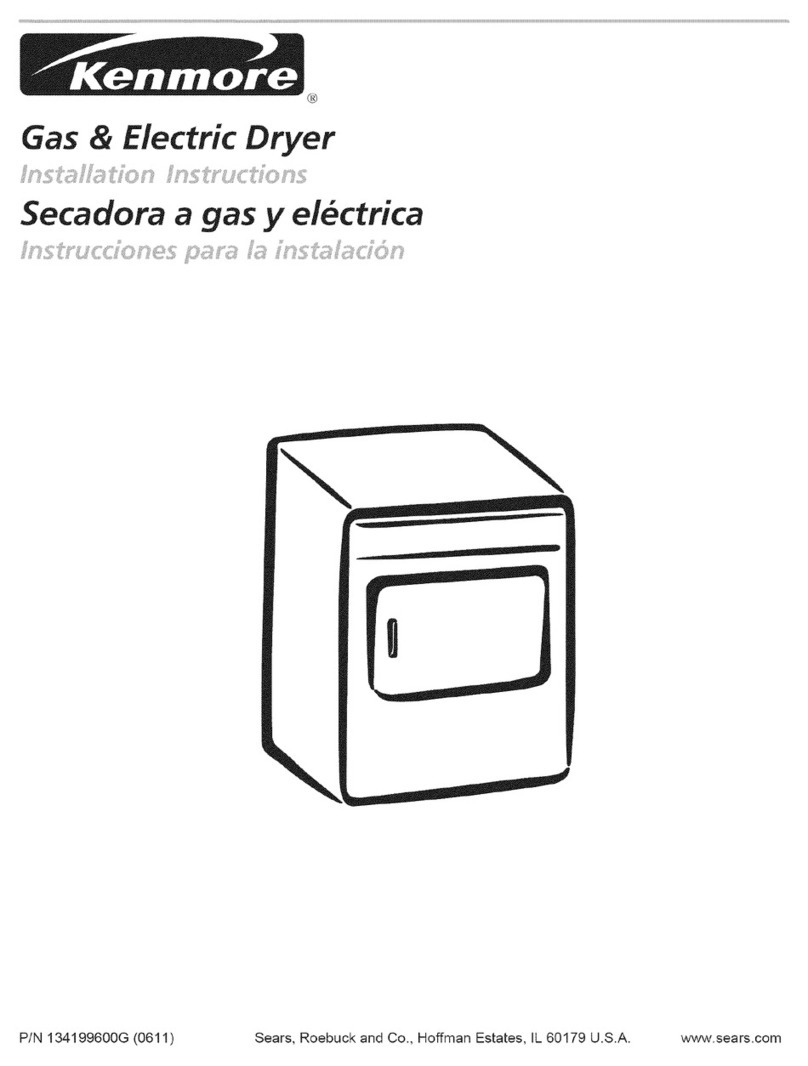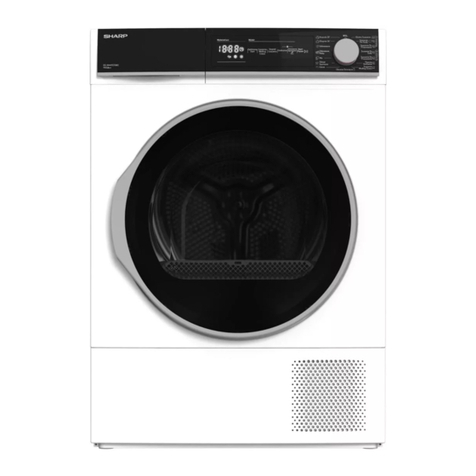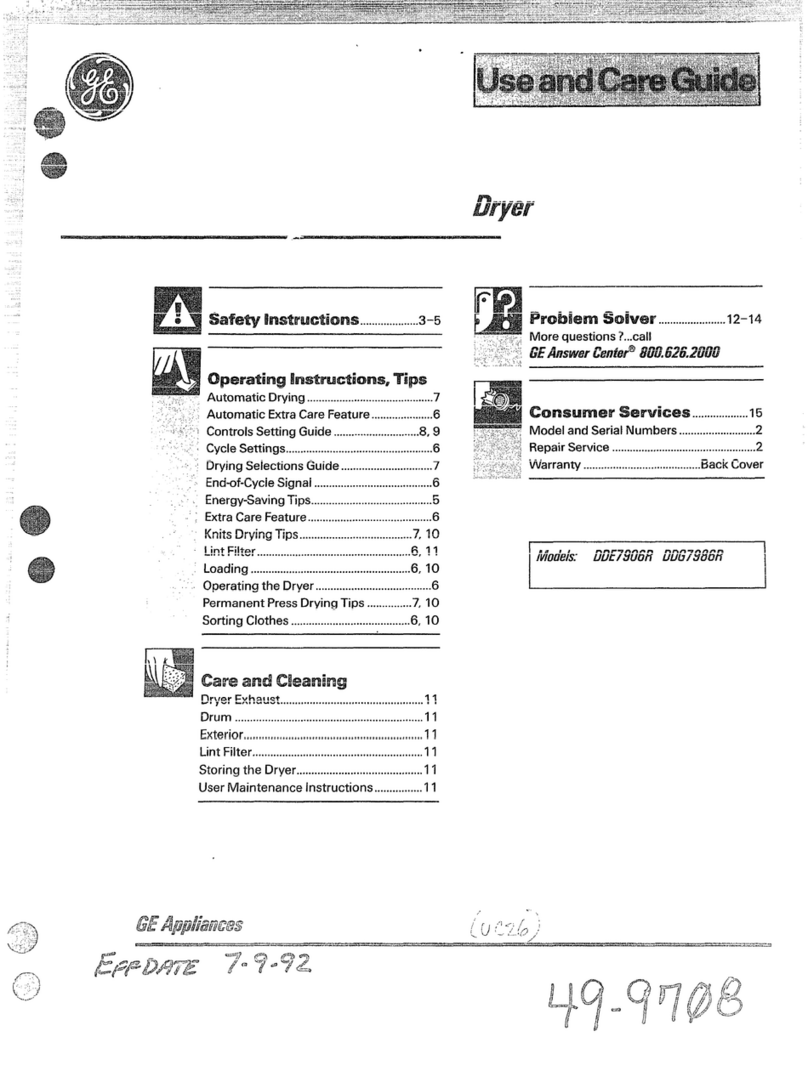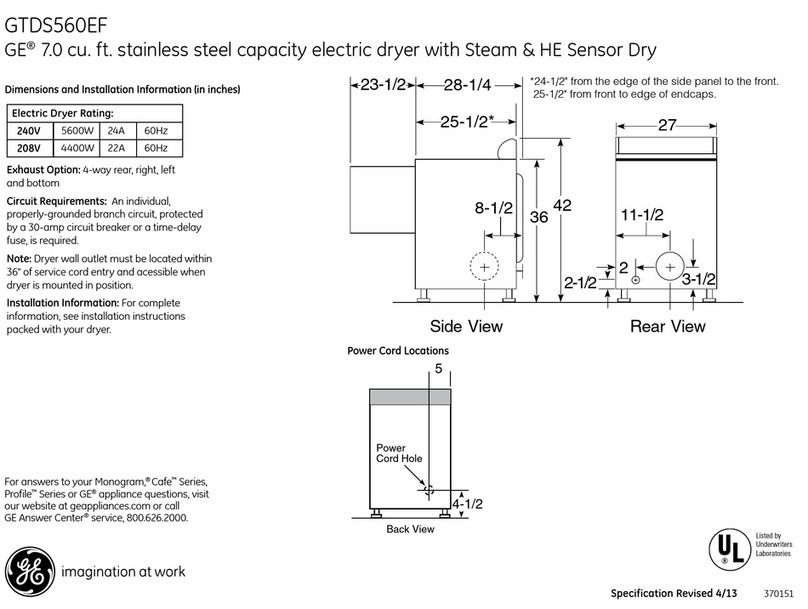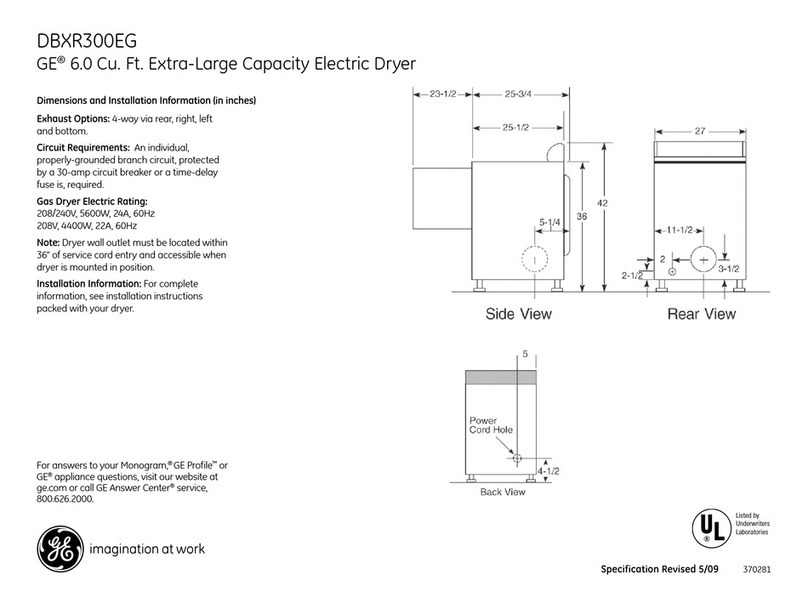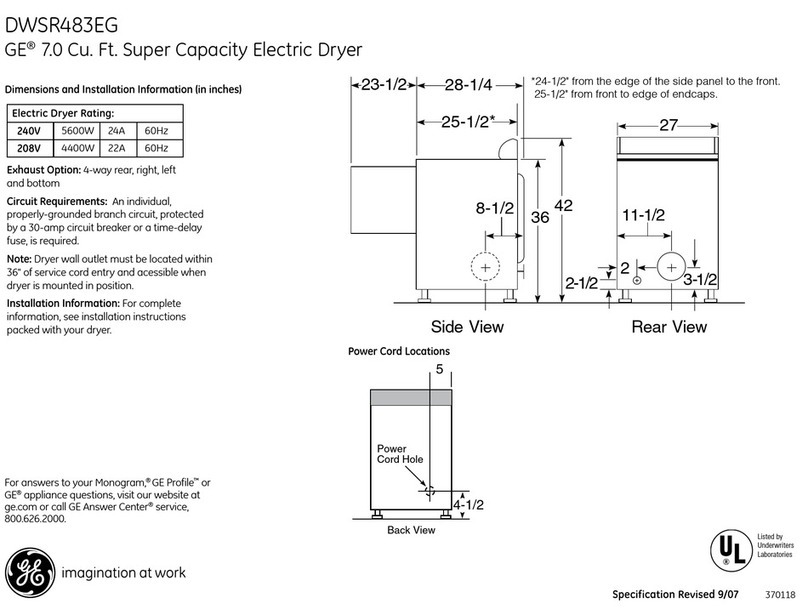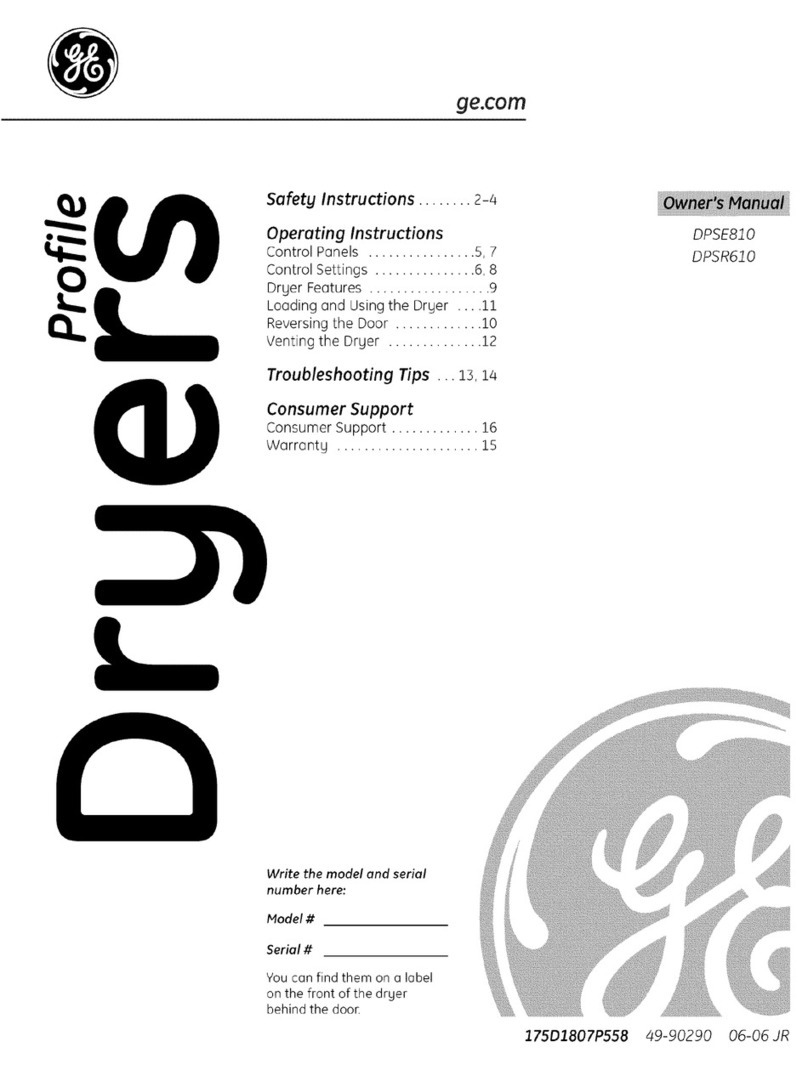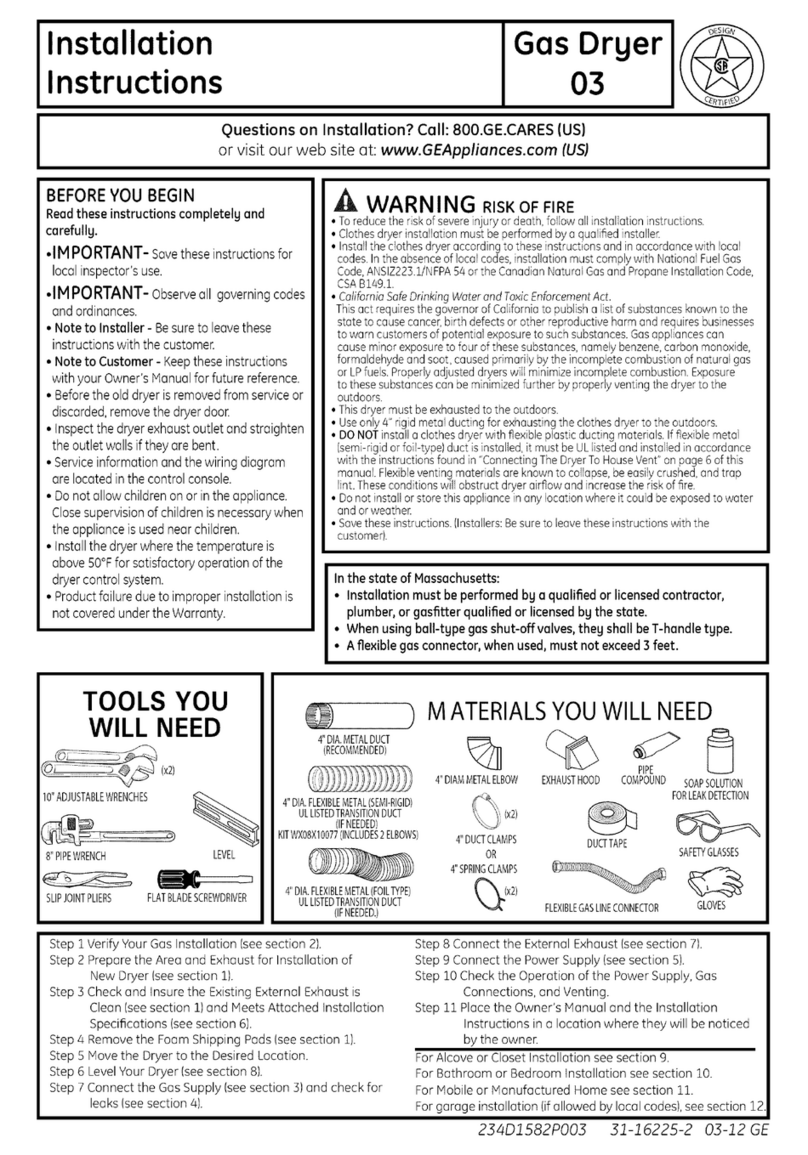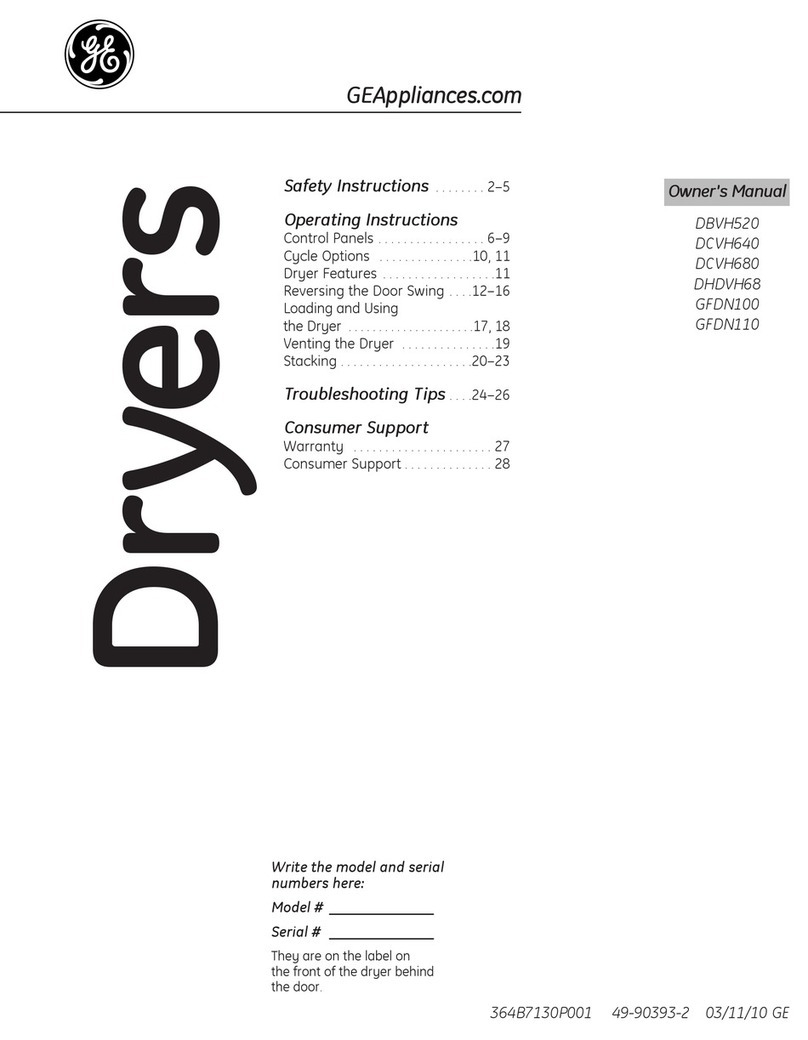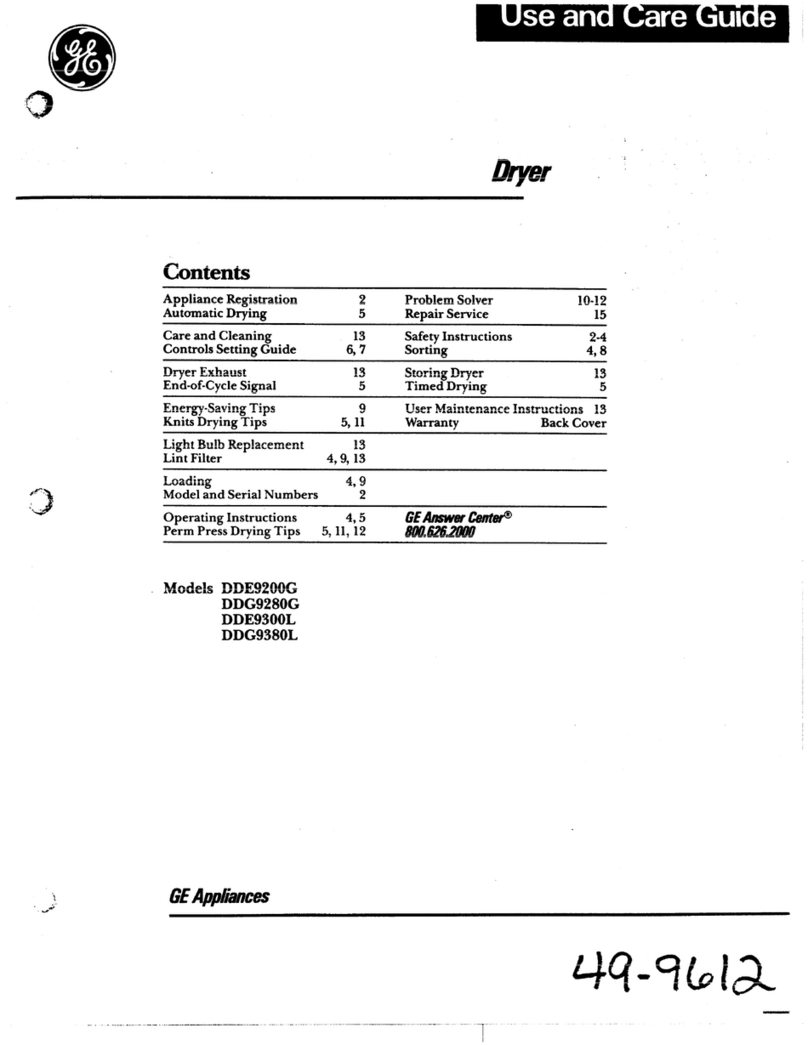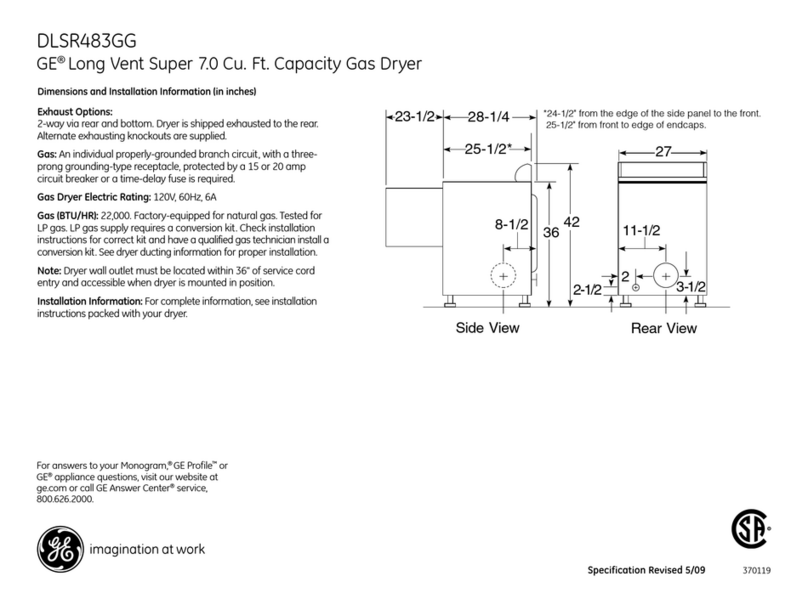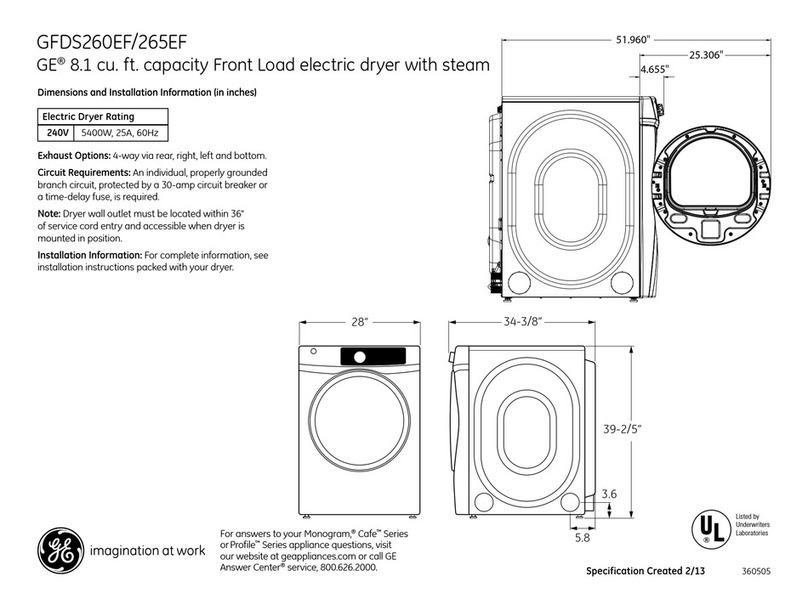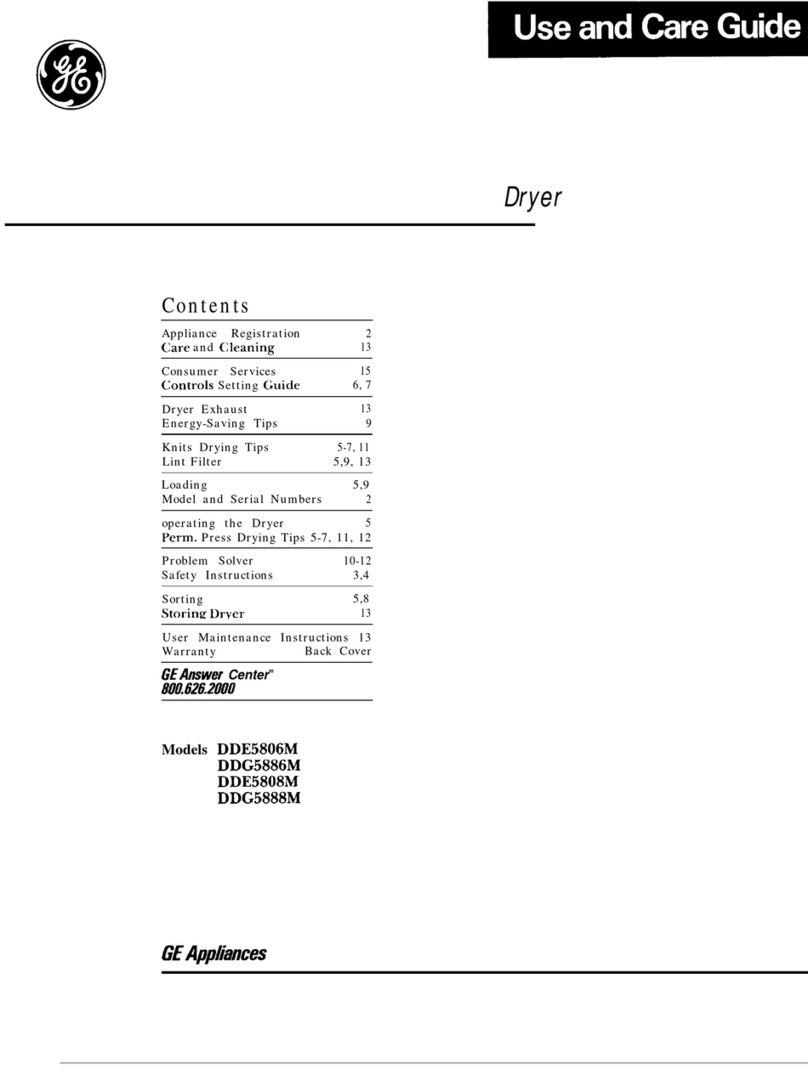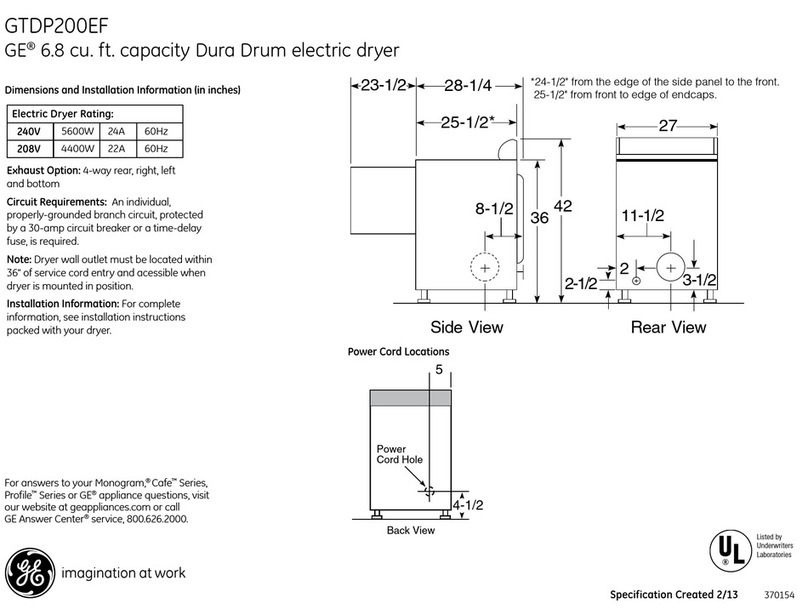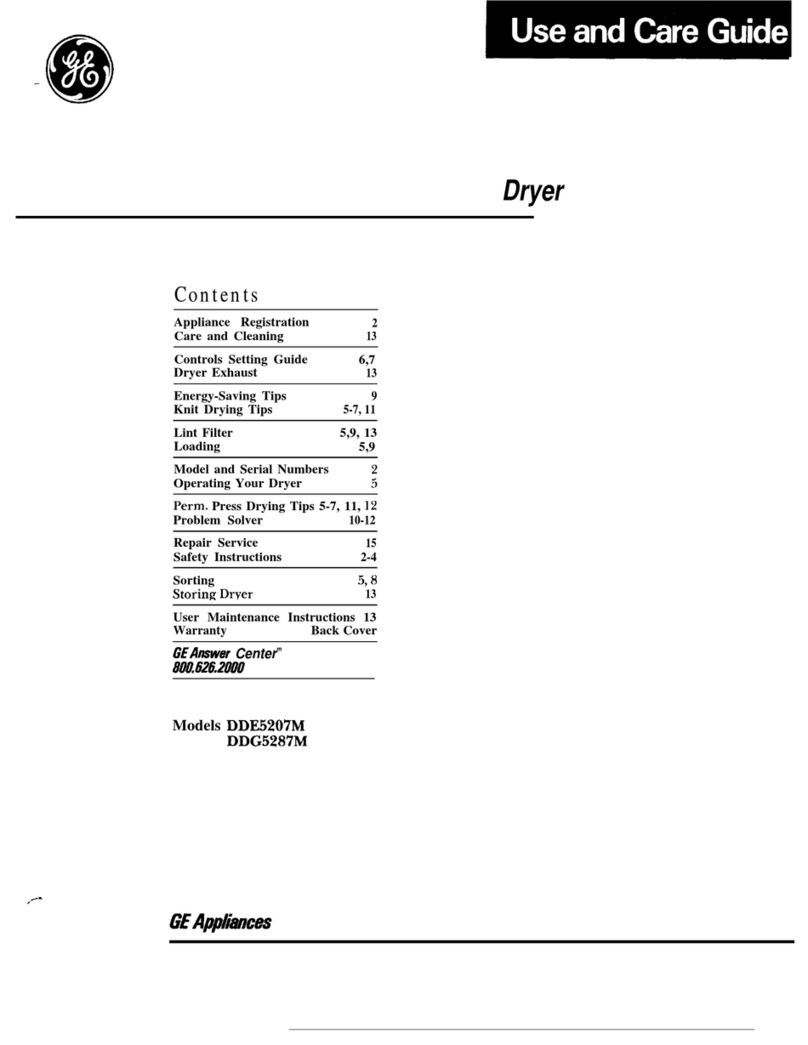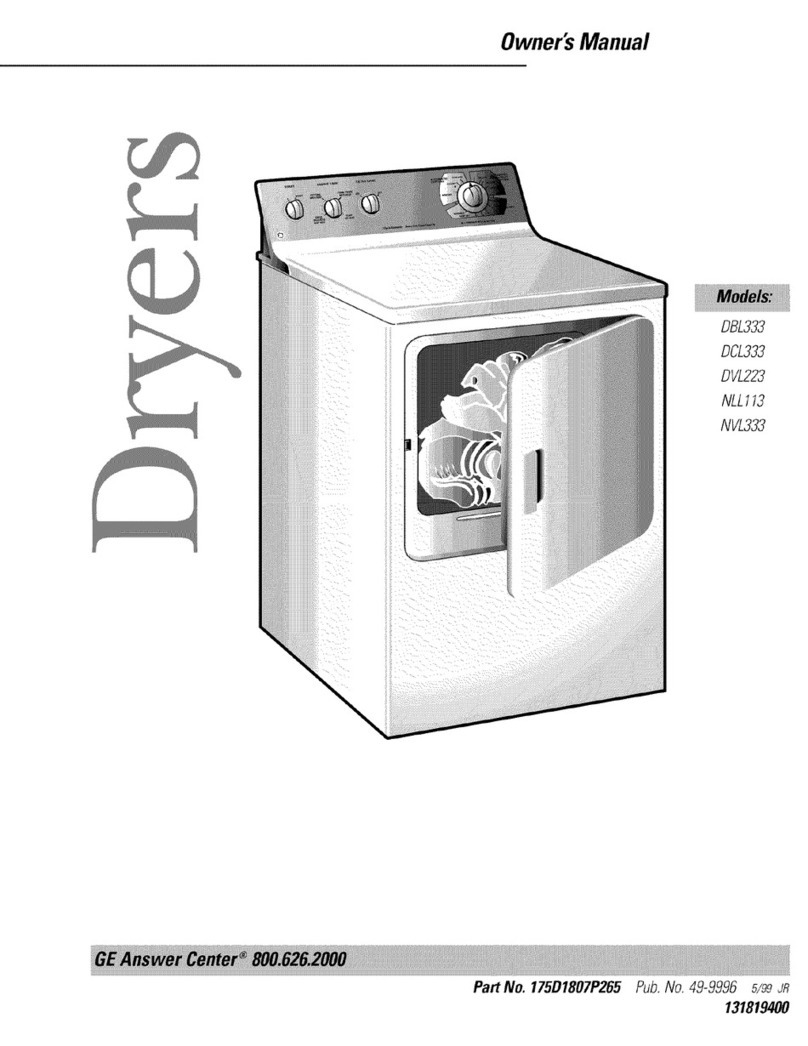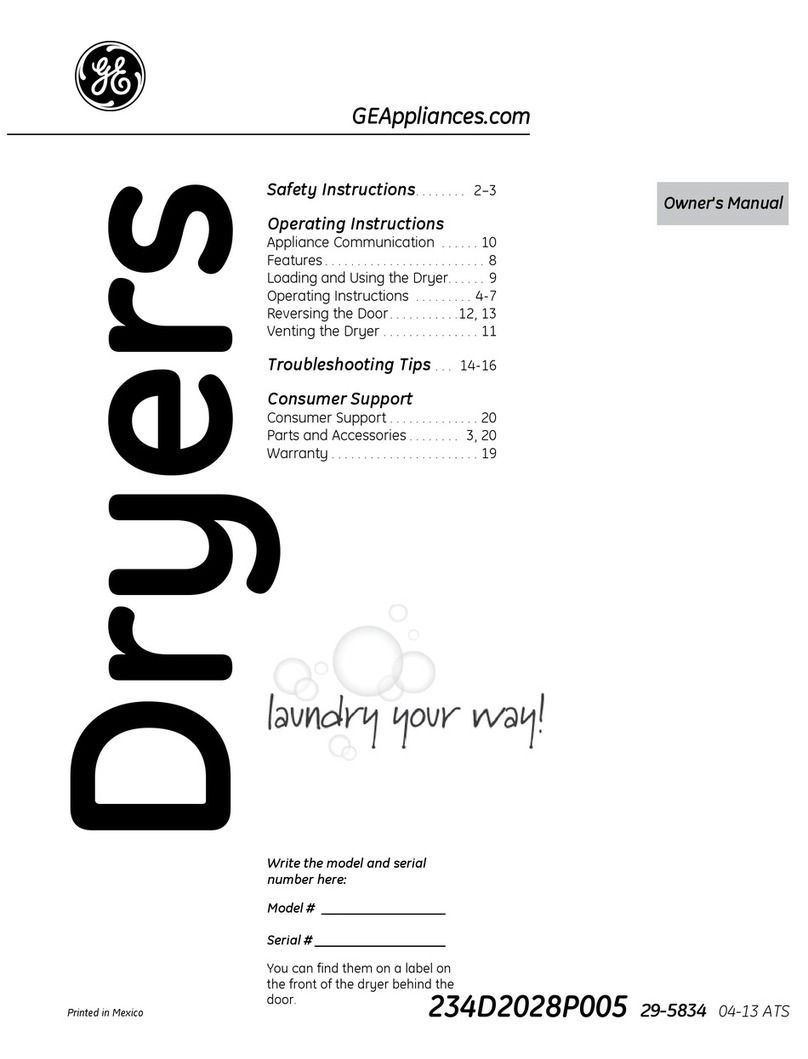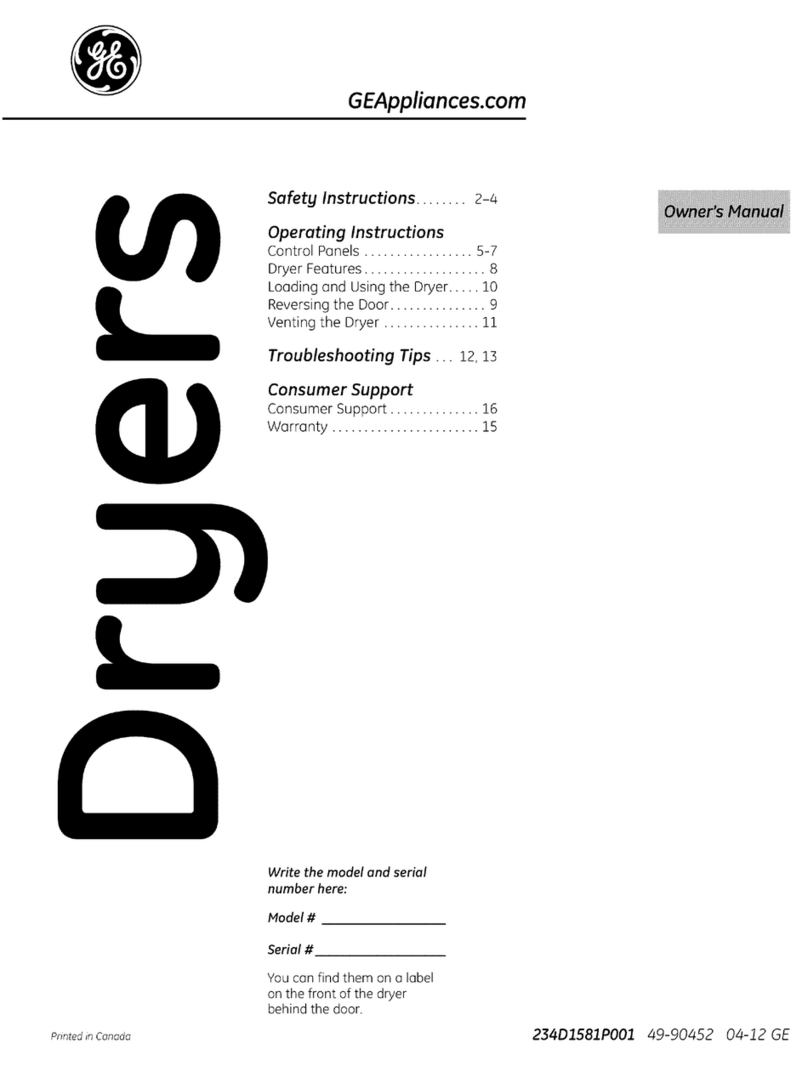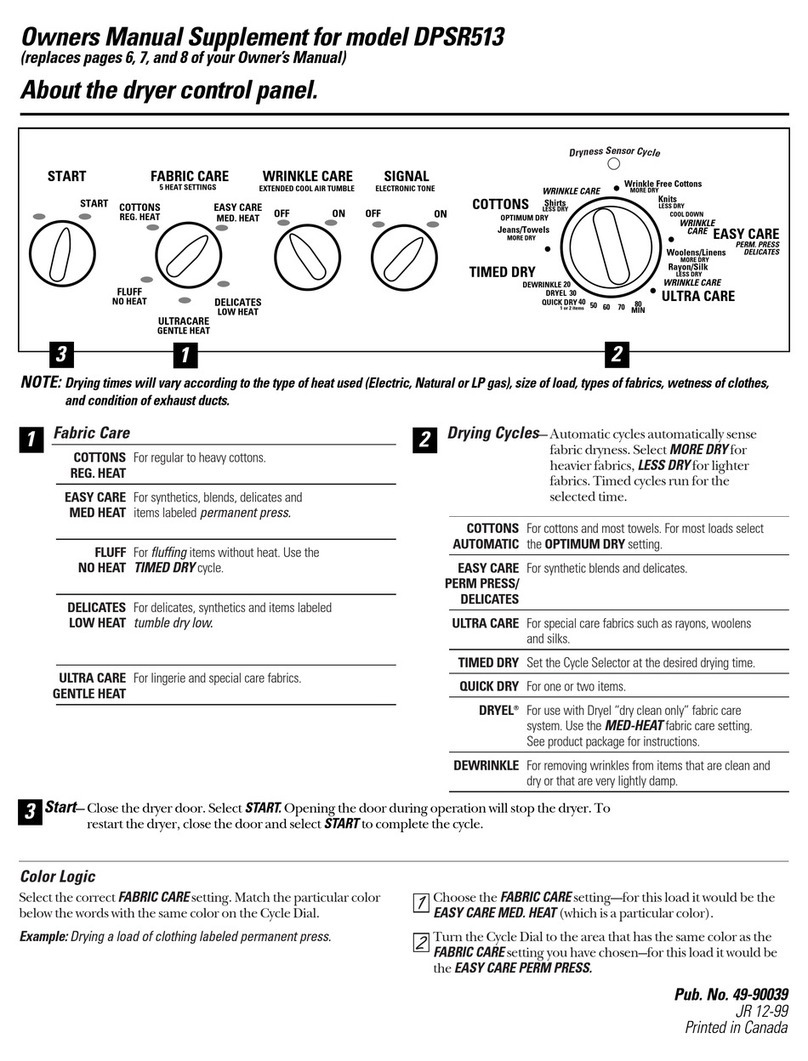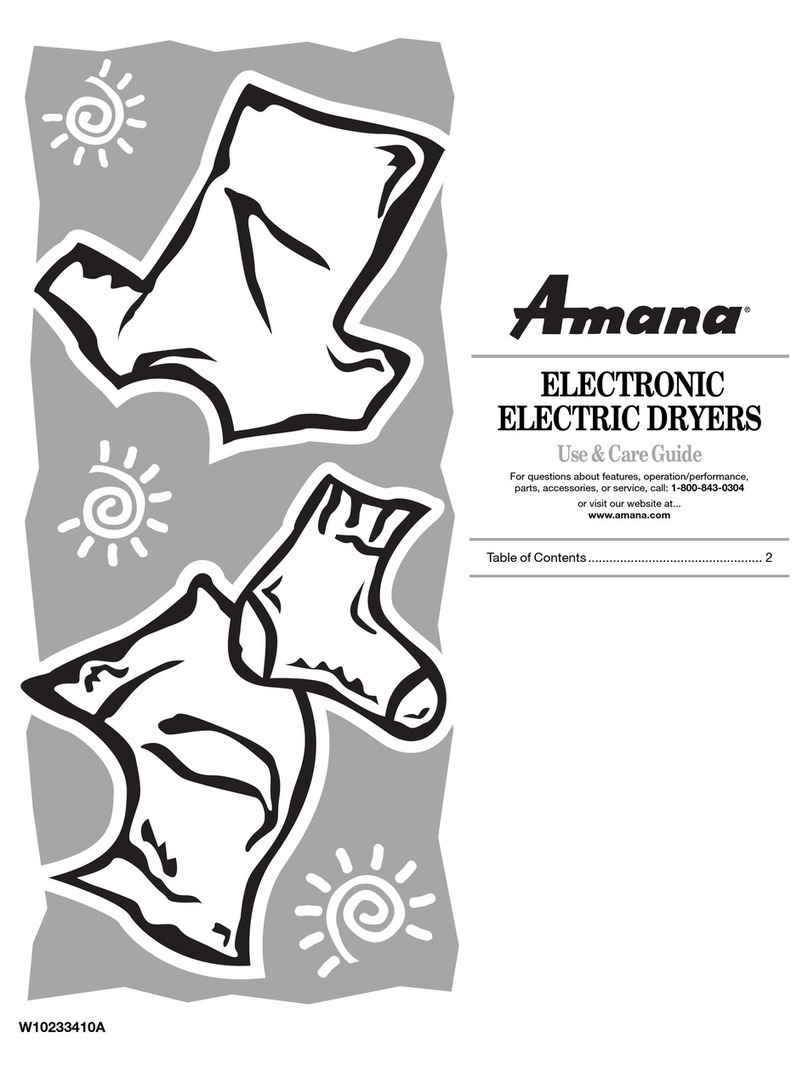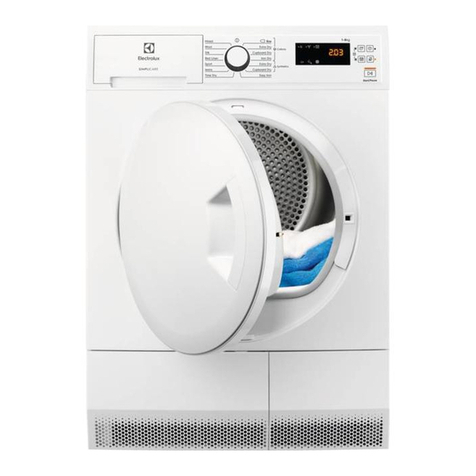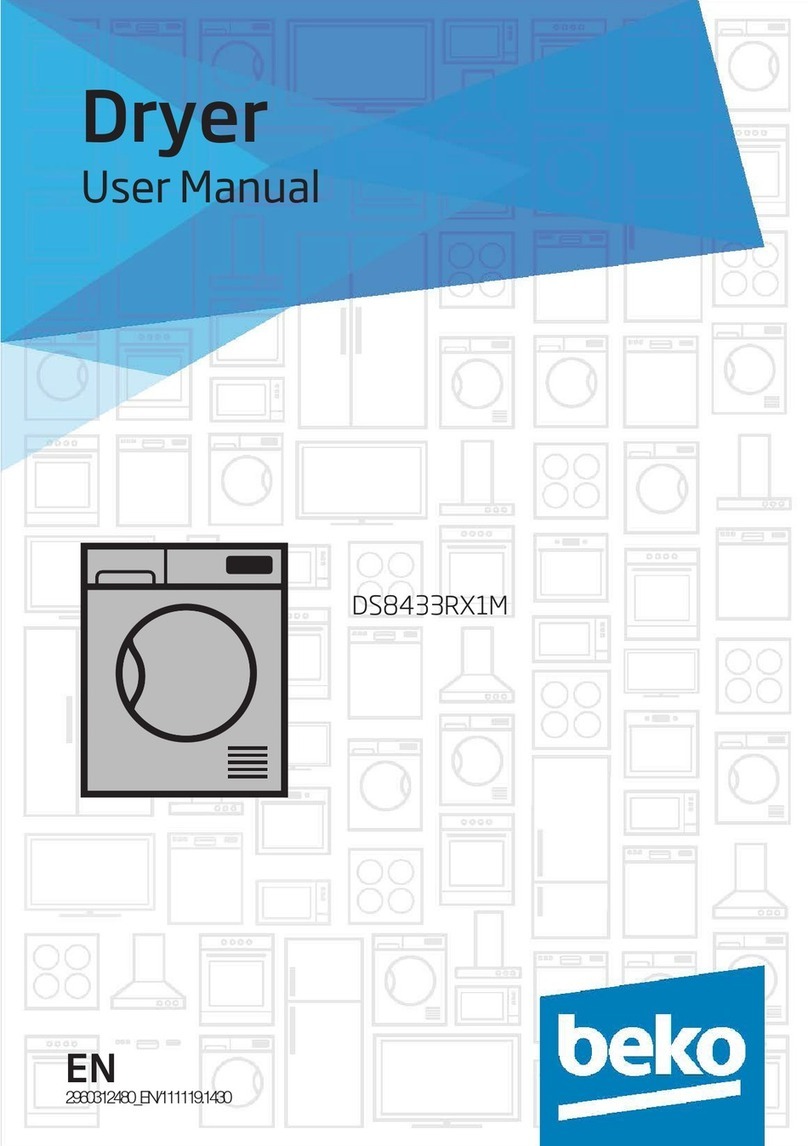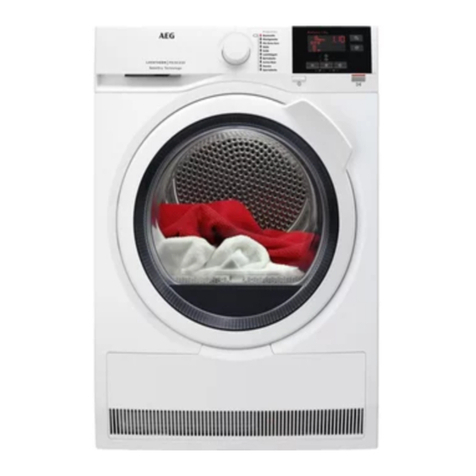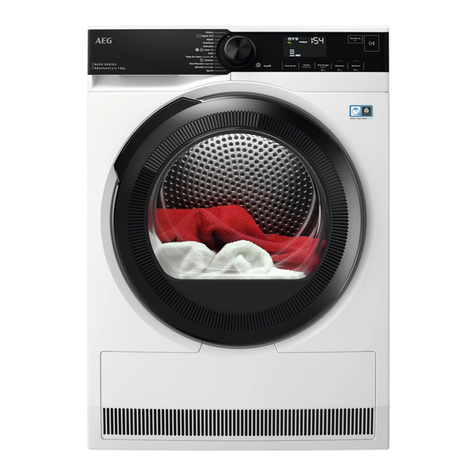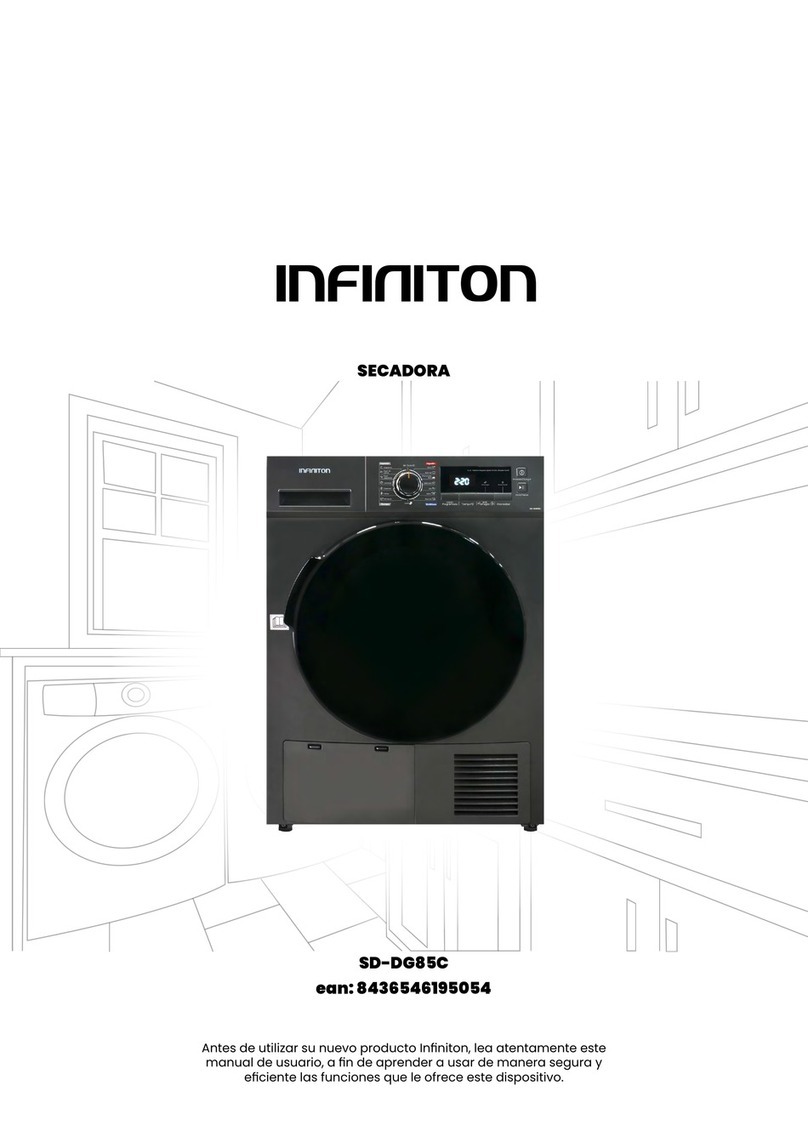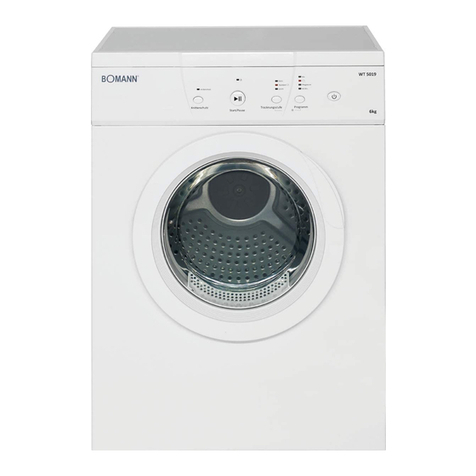
EXHAUST INFORMATION
l I Illlll Illll II_ll_
WARNING -TO REDUCE THE RiSK OF
FiRE OR PERSONAL iNJURY: r
- This clothes dryer must be exhausted to the outdoors.
- Use only 4" rigid metal ducting for the home exhaust
duct.
- Use only 4" rigid metal or UL-listed flexible metal
(semi-rigid or foil-type) duct to connect the dryer to
I the home exhaust duct. It must be installed in d
accordance with these instructions and local codes.
- Do not terminate exhaust in a chimney, a wall, a ceil-
I ing, gas vent, crawl space, attic, under an enclosed
floor, or in any other concealed space of a building.
The accumulated lint could create a fire hazard.
-Never terminate the exhaust into a common duct
with a kitchen exhaust system. A combination of
grease and lint creates a potential fire hazard.
- o not use duct longer than specified in the exhaust
length table. Longer ducts can accumulate lint,
creating a potential fire hazard.
-ever install a screen in or over the exhaust duct.
This will cause lint to accumulate, creating a poten-
tial fire hazard.
- Do not assemble ductwork with any fasteners that
I extend into the duct. These fasteners can accumul-
ate lint, creating a potential fire hazard.
- Do not obstruct incoming or exhausted air.
- rovide an access for inspection and cleaning of the
exhaust system, especially at turns and joints.
Exhaust system shall be inspected and cleaned at
least once a year.
- n special installations, it may be necessary to connect
the dryer to the house vent using a flexible metal (foil-
type) duct. A UL-listed flexible metal (foil4ype) duct
I may be used ONLY in installations where rigid metal or d
flexible metal (semi-rigid) ducting cannot be used AND
where a 4" diameter can be maintained throughout the
entire length of the transition duct. In Canada and in _
,the United States, only the,!lexible metal (foil-type)
| ducts that comply with the Outline for Clothes Dryer I
,,_'_,_'_mm,_l_,_m'_'_m,_,__Transition Duct Subject 2158A" shall be used. ,_
EXHAUST LENGTH
The MAXIMUM ALLOWABLE duct length and number of
bends of the exhaust system depends upon the type of duct,
number of turns, the type of exhaust hood (wall cap), and all
conditions note below. The maximum allowable length for
rigid metal duct is shown in the
table below. More than two 90 °
turns is not recommended. The
total length of flexible metal duct
shall not exceed 8 ft.(2.4 m). In
Canada and in the United States,
the required exhaust duct diameter
is 4in (102mm). NUMBER
OF 90°
TURNS
RIGID METAL DUCT 0
4" DIAMETER 2
PREFERRED
4in. 2 1/in.
MAXIMUM LENGTH
EXHAUST
- HOOD TYPE -
A B
45 ft. 30 ft.
35 ft. 2O ft.
25 ft. 10 ft.
REAR EXHAUST LOCATION
The dryers come ready for rear exhausting. Units
have separate exhausts.
J i_i_/_ _ dNOenTE:siAodlt;vdiedt_Cale
' !! II iJli'i' I- ---..........................................._..I _1 between cabinetbottomto
;13/4 " _ ........................... '0 .... rface.
EXHAUST SYSTEM CHECK LIST
HOOD OR WALL CAP
,, Terminate in a manner to prevent back drafts or
entry of birds or other wildlife.
,, Termination should present minimal resistance
to the exhaust air flow and should require little
or no maintenance to prevent clogging.
,, Wall caps must be installed at least 12" above
ground level or any other obstruction with the
opening pointed down.
SEPARATION OF TURNS
Separate all turns by at least 3 ft. of straight duct,
including distance between last turn and
dampered wall cap. If two turns must be closer
than 3 ft., deduct 10 ft. from the maximum
lengths shown in the table for each occurrence.
TURNS OTHER THAN 90 °
,, One turn of 45 ° or less may be ignored.
,, Two 45 ° turns should be treated as one 90 °.
,, Each turn over 45 ° should be treated as one 90 °.
SEALING OF JOINTS
All joints should be tight to avoid leaks. The male
end of each section of duct must point away
from the dryer.
Do not assemble the duct work with fasteners
that extend into the duct. They will serve as a
collection point for lint.
Duct joints can be made air and moisture-tight
by wrapping the overlapped joints with duct tape.
INSULATION
Duct work which runs through an unheated area
or is near an air conditioning duct should be
insulated to reduce condensation and lint build up
and be sloped down toward outdoors.
NOTE: Never install screen inside exhaust duct.
